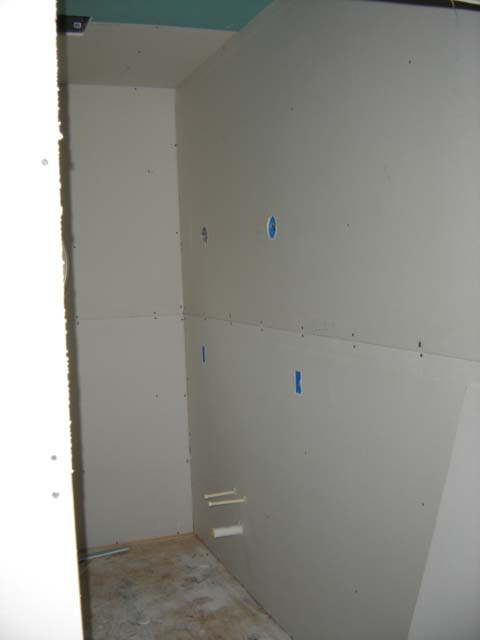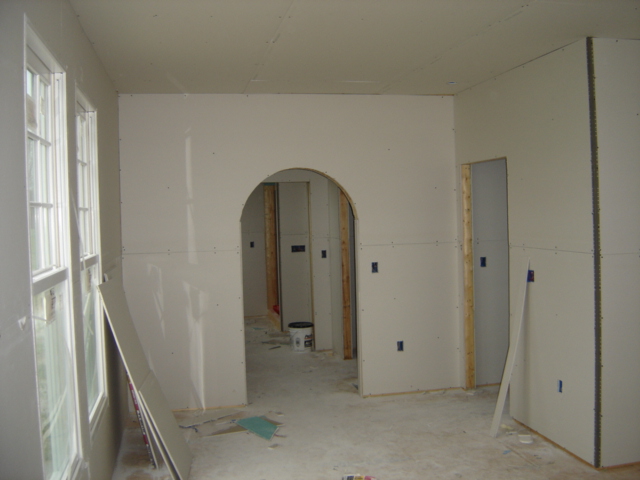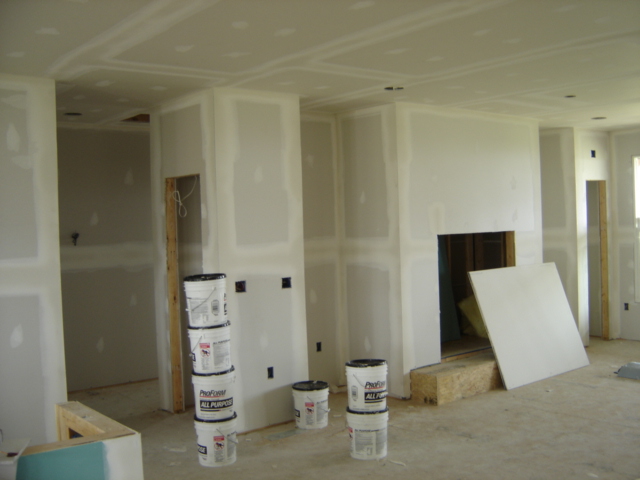Building our new house:
Hanging and finishing drywall
After wiring, plumbing, and insulation are installed, it's time to close in the walls. This is done by hanging drywall (commonly called "sheetrock") and finishing the drywall.
Drywall/sheetrock is a gypsum product -- gypsum is ground into a fine powder, moistened so it can be shaped, formed into sheets and dried, then paper is glued to each side, resulting in "boards" that are 4 feet wide and commonly 8 or 12 feet long; most common drywall is 1/2 inch thick. Drywall is attached to the studs on the frame of the house by, first, applying a bead of construction adhesive to the surface of the stud, then laying the drywall onto the stud and attaching it with nails or screws.
After the drywall is hung, then it's time for "mud and tape." "Mud" is joint compound, made of gypsum and various additives that make it damp and pliable. The joints between the drywall and places where nails or screws are put through the boards are filled with "mud" and covered with paper tape that is pressed into the wet mud.
The drywall compound is smoothed then allowed to dry for at least 24 hours. Then, workers sand the compound so it's smooth and the same thickness as the drywall board. Two more coats of mud are applied, each is allowed to dry and sanded. After the third coat, the wall is ready to be painted.
Here are some photos.
This photo shows one wall of the guest bathroom. The white pipes sticking from the wall are hot and cold water (the small pipes) and drain (the big pipe). The blue things sticking through the drywall are electrical fixtures -- the two round ones on top are for wall sconces that will flank the mirror in the bathroom; the two lower ones are for electrical outlets on the vanity.
Note where the sheets of drywall join there is a seam and a row of drywall nails that attach the drywall to the studs in the wall.
This photo is taken from the master bedroom looking through an arched opening into the vanity-dressing area and through that into the master bathroom. Note the seams in the drywall with nails along each seam. Note the metal strip along the corner. Also see the scrap pieces of drywall standing against the window and lying on the floor. The white bucket with the black lid holds 5 gallons of drywall compound -- mud.
In this photo, the seams between sheets of drywall and the nail holes have been covered with drywall joint compound ("mud"). The mud must dry thoroughly before the next step. Note the holes in the walls and ceiling for electrical fixtures. The big hole on the right center is where the fireplace will go.
Click on this link to see the second page of drywall work.


